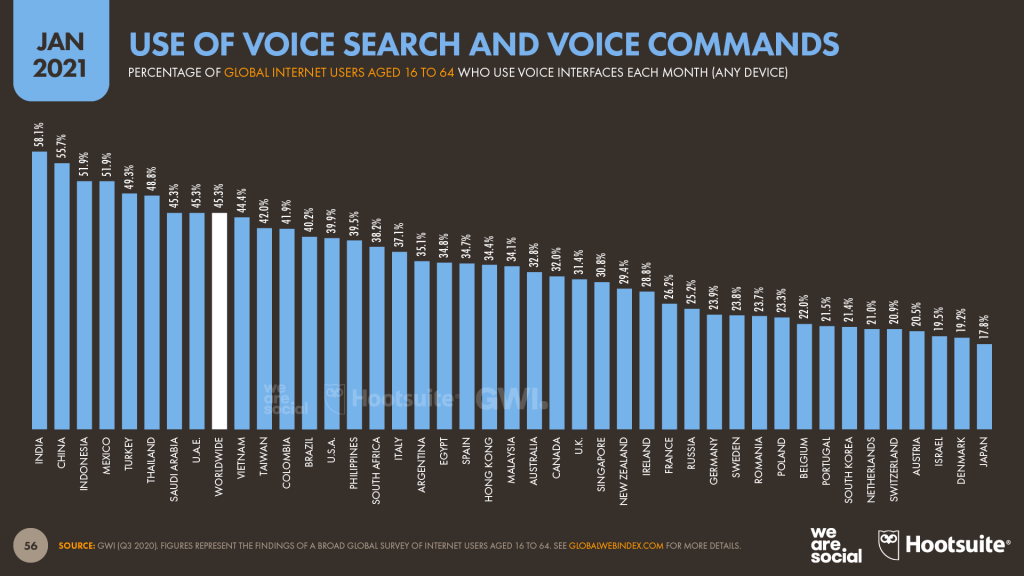It’s imperative to keep on top of changing trends in search engine optimisation to ensure your business maintains a strong online presence that generates new customers – and this year is no exception.
We’ve looked at 2021 SEO trends and the strategies you’ll need to help you rank highly on search engines and increase your revenue. Our research revealed that the SEO trends for 2021 focus on four key areas:
1. IMPORTANCE OF SEARCH INTENT
Search intent – also known as keyword intent, audience intent, or user intent – is the ultimate aim of an individual when using a search engine. It refers to the reason people use a particular keyword phrase, and Google will consider it crucial through 2021 and beyond in deciding what to put at the top of search engine results pages (SERPS).
According to Google, search intent is redefining the digital marketing funnel.
There are four main types of search intent:
Search Intent SERPS Analysis
While it’s impossible to tell exactly what search engine users are looking for when they use a specific keyword, there are ways to get an insight into search intent, including analysis of search engine results pages. This research will give you some idea of how Google’s search algorithm is currently working by showing you which results it thinks meet user intent. You can then use this data to refine your SEO marketing efforts.
Trying to figure out the search intent behind keywords on your own can be extremely time-consuming. That’s why SEO professionals use a variety of SERP analytical tools to speed up and simplify the process.
Quality Content
Google demands that content provides relevant and valuable information for its users, so inferior content that fails to meet search intent will see your site plummet down the rankings. This means producing content that addresses the needs and concerns of search engine users – not shouting about how great your products or services are. Navigational, transactional and commercial intent SEO is typically achieved with the main section of a business website – home page, about us, and service pages. Informational content lends itself to blogs.
2. MOBILE SEO FOCUS
Taking into account how your potential customers are using technology to shop around for goods or services is vital. Never more so than when it comes to your SEO focus and the need for a mobile-responsive business website.
In 2021, Google will continue to basically ignore desktop platforms, with mobile sites determining rankings. So it’s essential to ensure your website has a strong mobile SEO focus – that’s where most searches are being conducted. Visitors to a mobile-optimised site will get a user-friendly experience from their smartphone, laptop or tablet. The website will adapt to give them the best scanning, browsing, reading and interactive experience.

A mobile-responsive site meets the following criteria:
How Is Your Site Performing on Mobile Devices?
You can get a pretty good idea of how your site is performing on mobiles by looking at it from the perspective of a user.
If you struggle with things like this, so will your prospective customers – and they’re likely to give up on you and look elsewhere for whatever they need.
Mobile-First Indexing
Frustrated visitors who abandon your online platform aren’t the only issue if your website isn’t mobile-responsive. It can also have a significantly negative impact on SEO. Google’s Mobile-First Indexing system will look favourably on sites that are mobile-friendly while penalising those that aren’t.
Mobile-Friendly Test
You can get an evaluation of whether your site is mobile-optimised from Google resources such as the Mobile-Friendly Test.
This will explain:
3. CORE WEB VITALS AS RANKING FACTORS
In May 2020, Google announced its Core Web Vitals to measure user experience – loading, interactivity, and visual stability. These three metrics basically boil down to page speed – how fast does the page load, how soon does it get interactive, and how stable is it while loading?
Core Web Vitals are expected to begin playing a major role from May 2021 on whether content appears on the first page of rankings. For instance, if there are two pages with equally relevant content, user experience metrics will help to decide which one should be ranked higher. Taking page experience into account when considering SEO will help future-proof your site’s performance and rankings, enhancing UX and conversions.

Bearing in mind that research suggests fewer than 15 percent of websites meet Core Web Vitals criteria, you also need to:
Evaluating Page Experience
Google will use Core Web Vitals alongside other metrics to judge page experience. These other factors include:
Core Web Vitals may change from year to year, according to what users expect from a good web page experience, so you need to look out for any Google alerts on the subject in the future.
4. VOICE SEARCH OPTIMIZATION
An increasing number of people browsing search engines are using voice search, and there’s no reason to believe this will change in 2021. So voice search optimisation will remain an SEO necessity. Voice search began with smartphones and quickly escalated with the growing popularity of smart speakers and voice assistants. Individuals who use voice search are typically at the consideration stage of the marketing funnel and are more likely to convert than other users.
 Voice interfaces are the most popular alternative to text-based search engines, with 45 percent of global internet users saying that they used voice search or voice commands in the past 30 days.
Voice interfaces are the most popular alternative to text-based search engines, with 45 percent of global internet users saying that they used voice search or voice commands in the past 30 days.
Keyword Research for Voice Search
Most voice search queries are long-tail, very specific keywords as users look for precise answers. Results for voice searches are mostly the featured snippets and knowledge graphs you see on traditional searches.
Keyword research for voice search entails measures such as:
Need Help with SEO Trends in 2021?
If you need help keeping up with SEO trends in 2021, Mediatropy is here for you. We specialise in a holistic approach to SEO, with highly effective strategies based on researching your target audience, competitors and business goals. Contact us today!
Don't be shy — say hello and we'll be glad to kickstart your next exciting digital marketing journey.